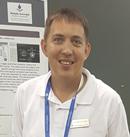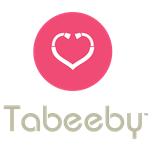Theme: Recent innovations and approaches in analytical techniques
Analytica Acta 2017
Note: You can submit your abstract under particular track mentioned below, please click on the track heading
Track 1: Applications of Analytical and Bioanalytical Methods
Bioanalysis may be a sub-discipline of analytical chemistry covering the quantitative activity of xenobiotics (drugs and their metabolites, and biological molecules in unnatural locations or concentrations) and biotic (macro and micro molecules, proteins, DNA, giant molecule medicine, metabolites) in biological systems. Applications for analytical and Bioanalytical method development and validation, are as follows: biological safety test, clinical support, separation of mixture of compound, drug analysis. Importance of understanding proteomics and process of food science is important, and can be discussed by using separation techniques.
Track 2: Novel Approaches to Analytical and Bioanalytical Method
Analytical chemistry is that the study of the separation, identification, quality control and quality assurance of the chemical parts of natural and artificial materials. The maintenance of a desired level of quality in an exceedingly service or product, particularly by means that of attention to each stage of the method of delivery or production. Bioanalytical Chemistry could be a sub-division of Analytical Chemistry that covers the measuring of medicine, Ion sensors, Proteins and DNA Sequences in unnatural samples or concentrations. Correct quantification of the drug samples is extremely very important for several scientific endeavours which can not hinder the result. Therefore the Bioanalytical Techniques are in the main focussed to induce the correct results of the drug sample to supply an ideal result.
Track 3: Bio analytical methodology
Bioanalytical Chemistry may be a sub-division of Analytical Chemistry that covers the measuring of medicine, Proteins and de oxy ribonucleic acid in unnatural samples or concentrations. In the Earlier times, Bioanalysis was thought to be used for the measuring of little drug molecules, How ever since the outburst of biopharmaceuticals has started. Bioanalytical Techniques and validation are utilized in the measuring and analysis of huge molecule medicine. Bioanalytical Chemistry advancement chiefly started by the usage of the recently developed subtle strategies that include: combined techniques like Chromatography, LC-MS, Spectroscopy and ultrafast spectroscopy, GC-MS and natural process strategies like HPLC.
Track 4: Analytical Methodology
The Analytical methodology could be a generic method combining the facility of the scientific technique with the utilization of formal method to unravel any kind of drawback. Analytical method has some techniques which will be very useful in analysis of drugs and their molecules. These are as follows: forensic techniques, Electro analytical strategies. Fluorescence techniques and forensic analytical techniques are useful in detection of unknown things like rhetorical proof. Bioanalytical method validation and development is an efficient technique method development involves and optimizing numerous technique parameters to satisfy the expressed goals of the strategy and procedure.
Track 5: Analytical Techniques in Pharmacogenomics
An analytical technique could also be a method that's accustomed ensures the concentration of a matter or substance. Future analytical techniques in DNA analysis ought to be important to induce absolute leads to medication The foremost common techniques utilised in analytical chemistry unit space are follows: titrimetric, Electrochemistry ways during which, still as potentiometery and voltammetry; spectroscopy, supported the differential interaction of the analyte. Forensic DNA analysis, testing is seriously hampered by a growing backlog of compound samples by exploitation HPLC.
Track 6: Advances in Chromatography and Mass Spectrometry
Chromatography and mass qualitative analysis is employed for analysis of organic compounds. Electro spray ionization (ESI) could be a technique employed in mass spectroscopic analysis. As compare to chromatography and mass spectrometry .HPLC is more flexible informative and trusted by the industry people. Recent advances in sample preparation techniques to beat difficulties encountered throughout measuring of little molecules from bio fluids mistreatment LC-MS. For Measuring, observation and protective your important Investments analytical chemistry instruments are used. Global Bioanalysis seminars are conducted and those specifically applied for chromatography assays, ligand binding assays to know more advances.
Track 7: Analytical Techniques in Immuno Chemistry
Analytical techniques modify researchers to look at complicated relationships between variables and those techniques are Regression Analysis, Grouping ways, Multiple Equation Models. Chemistry that involves the study of the molecular mechanisms underlying the performance of the system, particularly the character of antibodies, antigens and their interactions. The foremost common diagnostic ways include: diagnostic assay, Endoscopy, Diagnostic Imaging, Blood Tests, immunochemical assay. The super molecule detected by the bioassay is usually remarked as Associate in Nursing "analyte" and is in several cases a macromolecule. Analytes in biological liquids like body fluid or area unit often measured mistreatment immuno assays for medical and analysis functions.
Track 8: Environmental Analytical Aspects
Environmental analytical chemistry is the scientific study of the chemical and organic chemistry phenomena that occur in natural places. Environmental chemistry is that the scientific study of the chemical and chemical science phenomena that occur in natural places. Quantitative qualitative analysis may be a key a part of environmental chemistry, since it provides the information that frame most environmental studies or environment pollution studies. Common analytical techniques used for quantitative determinations in environmental chemistry embody classical wet chemistry, like menstruation, titrimetric and chemistry strategies. Sometimes due to climate changes in the atmosphere pests attaches the crops. To avoid loss of fertility and food safety in crops pesticides are used.
Track 9: NMR and Analysis of small Organic Molecules
In bioscience and drugs, to a small degree molecule may be a coffee mass (<900 Daltons [1]) compound which is able to facilitate regulate a process, with a size on the order of 10−9 m. Most drug analysis square measure very little molecules. For analysis of small organic molecules the subsequent devices ought to be used are as follows HPLC method, chromatography, Ultraviolet-visible (UV-VIS) spectrophotometry, Infrared (IR) spectrometry and mass spectrometry.
Track 10: Diagnostic Assays and Test Kits in analytical chemistry
Immune chromatographic Assays in addition cited as Lateral Flow Tests or just Strip Tests unit of measurement immunoassays performed on an easy to use strip format. Amount of your real time quantitative PCR is incredibly correct and fewer effortful than current quantitative PCR ways in which. Needs relatively bit of sample, Adequate level of sensitivity, easy manufacture in large scale ,Stability of the last word product at temperature (shelf life) , β-D-Glucan as a Diagnostics Adjunct for Invasive fungal Infections: Validation and drug development, and Performance in Patients with Acute Myelogenous blood cancer .
Track 11: New analytical Instrumentation and Equipment
NMR analysis is used in separation of complex l and natural samples. Recent advances in mass chemical analysis area unit facultative improved analysis of endogenous metabolites. Here we have a tendency to discuss many problems relevant to developing High-Performance Liquid Chromatography, electro spray ionization, mass chemical analysis ways for targeted metabolomics (i.e., menstruation of dozens to many specific metabolites).Lab-on-a-chip devices area unit a set of MEMS instruments and infrequently indicated by "Micro Total Analysis Systems" (µTAS) still.
Track 12: Regulatory Issues and Bio safety Challenges in Bioanalysis
Liquid chromatography-mass spectrum analysis may be a key analytical technique that mixes the physical separation capabilities of liquid action with the mass spectrometry analysis capabilities of spectrometry analysis.LC-MS system is employed for fast and mass directed purification of natural-products extracts and new molecular entities necessary to food, pharmaceutical, agrochemical and different industries. LC-MS is sometimes utilized in drug development research at many different stages, impurity identification, quantitative Bioanalysis, and control. FDA has inspired testing of current quality testing of traditional medicines among medicine patients throughout drug development. Traditional Chinese Medicine is a healing system developed in China more than 2,200 years ago, incorporating therapies that are in some cases. One of its guiding principles is to dispel evil and support the good. In addition to treating illness, Traditional Chinese Medicine focuses on strengthening the body's defences and enhancing its capacity for healing herbs and to maintain health.
Importance & Scope:
Analytica-2017 aims to bring together leading academic scientists, researchers and research scholars to exchange and share their experiences and research results about all the latest research ideas in the field of Analytica and Bioanalytical Chemistry. It also provides the chance for researchers, practitioners and educators to present and discuss the most recent innovations, trends, and concerns, practical challenges encountered and the solutions adopted in the fields.
Analytica-2017 is an international platform for presenting research about Analytical Science and Instrumentation, thus contributes to the dissemination of knowledge for the benefit of both the academia and business. This event brings together the top professionals in the field along with the highly affiliated professors to explore the advancements and latest applications achieved in the field of Analytical & Bioanalytical sciences. Analytica-2017 discusses Analytical and Bioanalytical techniques employed in Pharmaceutical and Life science fields which mark the support for the advanced and much needed research by their study on various
Why Atlanta?
Atlanta is the capital of and the most populous city in the U.S. state of Georgia, with an estimated 2015 population of 463,878. Atlanta is the cultural and economic centre of the Atlanta metropolitan area, home to 5,522,942 people and the ninth largest metropolitan area in the United States. Atlanta is the county seat of Fulton County, and a small portion of the city extends eastward into DeKalb County.
Atlanta was established in 1837 at the intersection of two railroad lines, and the city rose from the ashes of the American Civil War to become a national centre of commerce. In the decades following the Civil Rights Movement, during which the city earned a reputation as "too busy to hate" for the progressive views of its citizens and leaders,Atlanta attained international prominence. Atlanta is also a major educational center, with many prestigious universities and colleges, including Emory University (1836), Georgia Institute of Technology (1885), and Georgia State University (1913). Morehouse College (1867), Spelman College (1881), and Clark Atlanta University (1865; 1869) are important historically black colleges.
Why to attend???
With members from around the world focused on learning about Analytical Chemistry, Pharmaceutical chemistry, Chromatography, Mass spectrometry and Pharmacology; this is your single best opportunity to reach the largest assemblage of participants. Conduct demonstrations, distribute information, meet with current and potential customers, make a splash with a new product line, and receive name recognition at this 2-day event. World-renowned speakers, the most recent techniques, and the newest updates in fields are hallmarks of this conference.
Target Audience:
Directors, Presidents & CEO’s from companies, Chemical Instrument Vendors, Professors and Students from Academia in the study of Analytical and Bioanalytical Sciences. Delegates from various Pharma & Instrumental companies from all over the world.
Market Analysis:
The global analytical chemistry market was valued at $40,308.8 million in 2011 and is predicted to achieve $59,319.2 million by 2016; growing at a CAGR of 8 May 1945 from 2011 to 2016. Analytical chemistry market and the life sciences, by technology studied during this report area unit metameric as natural science reagents and analytical reagents; of that natural science phase accounted for the biggest share of 59.37% of the full market in 2011.North America dominated the life sciences and analytical reagents market with 46.28% share in 2011. Thriving completion of the primary section of the Human ordination Project, prior schedule, has given rise within the U.S. chemical agent market. The Asian market, however, shows bigger opportunities, in comparison to different regions, with the best CAGR of 11.8% from 2011 to 2016; because of inflated analysis outsourcing activities within the life technology field.
According to IMS (Intercontinental Marketing Services) Health study report, in 2011 Spain became the fourth largest pharmaceutical market in Europe with a market size of $22.7 billion. The market is dominated by branded medicines with a share of about 88% value wise. Presently few Pharma companies in Spain have received approvals from US Food and Drug Administration (US FDA), European Medicines Agency (EMA), Pharmaceuticals and Medical Devices Agency, Japan (PMDA).
Spectrometry segment has the largest share (33.8%) followed by chromatography (22%) in the year 2011. The spectrometry market is driven by the coupling of mass spectrometry with chromatography techniques, growing 9.4% from 2011 to 2016.
Global Market
The global analytical chemistry and instrumentation market was estimated to be $30.2 billion in the year 2011 and is expected to grow 8.4% from 2011 to 2016 to reach $45.2 billion. Spectrometry segment has the largest share (33.8%) followed by chromatography (22%) in the year 2011. The spectrometry market is driven by the coupling of mass spectrometry with chromatography techniques, growing 9.4% from 2011 to 2017.Element analysis segment leads the global market and is expected to reach USD 14 billion by the end of 2019
Major Associations in Europe:
American Chemical Society
American Institute of Chemists (AIC)
American Society of Brewing Chemists
American Society for Mass Spectrometry
Royal Society of Chemistry (RSC)
Swedish Chemical Society
Spanish Society of Analytical Chemistry
Spanish Society of Chromatography and Related Techniques
Spanish Society of Mass Spectrometry
Spanish Royal Society of Chemistry
European Society for Separation Science
The Chromatographic Society
Swedish Mass Spectrometry Society
British Mass Spectroscopic Society
Conference Highlights:
Novel Approaches to Analytical and Bioanalytical Methods
Advances in Chromatography and Mass Spectrometry
Spectroscopy and Ultrafast Spectroscopy
Nanotechnology Applications in Analytical Methods
New Instrumentation and Equipment
HPLC Analytical Method Development and Validation
Analytical Proteomics and Metabolomics
Environmental Analytical Aspects
Electroanalytical Methods
Conference Highlights
- Novel Approaches to Analytical and Bioanalytical Methods
- Analytical Methodology
- Bioanalytical Methodology
- Analytical Techniques in Pharmacogenomics
- NMR and Analysis of Small Organic Molecules
- Advances in Chromatography and Mass Spectrometry
- Analytical Techniques in Immuno Chemistry
- Environmental Analytical Aspects
- Applications of Analytical and Bioanalytical Methods
- Diagnostic Assays and Test Kits
- New Instrumentation and Equipment
- Regulatory Issues and Biosafety Challenges in Bioanalysis
- Analytical Chemistry and Engineering
To share your views and research, please click here to register for the Conference.
To Collaborate Scientific Professionals around the World
| Conference Date | November 02-03, 2017 | ||
| Sponsors & Exhibitors |
|
||
| Speaker Opportunity Closed | Day 1 | Day 2 | |
| Poster Opportunity Closed | Click Here to View | ||
Useful Links
Special Issues
All accepted abstracts will be published in respective Our International Journals.
- Journal of Analytical & Bioanalytical Techniques
- Journal of Chromatography & Separation Techniques
- Pharmaceutica Analytica Acta
Abstracts will be provided with Digital Object Identifier by


















